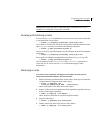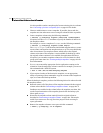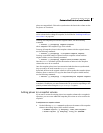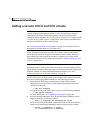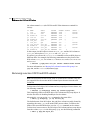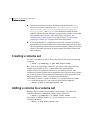
355Administering volume snapshots
Creating traditional third-mirror break-off snapshots
Displaying snapshot information
The vxassist snapprint command displays the associations between the
original volumes and their respective replicas (snapshot copies):
# vxassist snapprint [volume]
Output from this command is shown in the following examples:
# vxassist -g mydg snapprint v1
V NAME USETYPE LENGTH
SS SNAPOBJ NAME LENGTH %DIRTY
DP NAME VOLUME LENGTH %DIRTY
v v1 fsgen 20480
ss SNAP-v1_snp SNAP-v1 20480 4
dp v1-01 v1 20480 0
dp v1-02 v1 20480 0
v SNAP-v1 fsgen 20480
ss v1_snp v1 20480 0
# vxassist -g mydg snapprint v2
V NAME USETYPE LENGTH
SS SNAPOBJ NAME LENGTH %DIRTY
DP NAME VOLUME LENGTH %DIRTY
v v2 fsgen 20480
ss -- SNAP-v2 20480 0
dp v2-01 v2 20480 0
v SNAP-v2 fsgen 20480
ss -- v2 20480 0
In this example, Persistent FastResync is enabled on volume v1, and Non-
Persistent FastResync on volume v2. Lines beginning with v, dp and ss indicate
a volume, detached plex and snapshot plex respectively. The %DIRTY field
indicates the percentage of a snapshot plex or detached plex that is dirty with
respect to the original volume. Notice that no snap objects are associated with
volume v2 or with its snapshot volume SNAP-v2. See “How persistent
FastResync works with snapshots” on page 70 for more information about snap
objects.
If a volume is specified, the
snapprint command displays an error message if no
FastResync maps are enabled for that volume.



